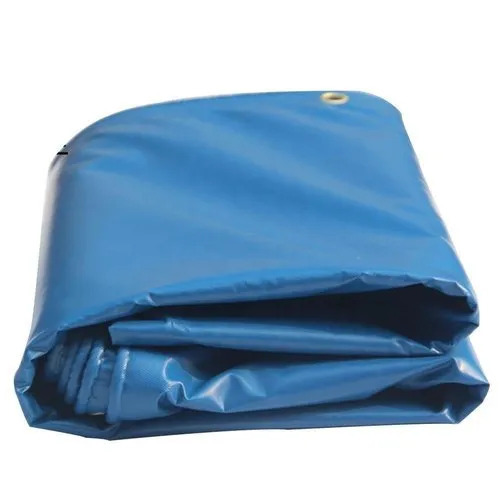#Heavy Duty Waterproof Tarps sheets
Explore tagged Tumblr posts
Text
#heavy duty tarp#heavy duty tarps#heavy duty tarpaulins#heavy duty tarpaulin#tarpaulin#tarpaulins#tarpaulin sheet#tarps#tarp#tarpaulin sheets#tarpaulins sheet#large tarpaulin#tarpaulin uk#waterproof tarp#waterproof tarps
0 notes
Text
#PVC tarpaulin#Buy tarpaulin#Tarpaulin#Tarpaulin sheet#Tarpaulins cover#Plastic Tarpaulin#Tarps#Tarp#Tarpaulin uk#Waterproof Tarpaulin#Tarpaulins#Heavy duty tarp#Canvas Tarpaulin
0 notes
Text
#tarpaulins sheet#tarpaulin sheets#tarpaulin sheet#buy tarpaulins uk#waterproof tarpaulins#tarpaulins sheets#tarps sheet#buy tarpaulins#tarpaulin covers#uk#heavy duty tarp#heavy duty tarps#heavy duty waterproof tarp
0 notes
Text
#heavy weight tarpaulins#large tarpaulin sheets#heavy duty tarpaulin sheet#waterproof tarps#waterproof Tarpaulin sheets#heavy duty waterproof tarpaulin#tarpaulin heavy duty#tarpaulin black#black tarpaulins#Tarpaulins Sheeting#waterproof tarp#Heavy Duty tarpaulins#Heavy Duty tarpaulin
0 notes
Text
View our wide selection of vinyl tarps, canvas tarps, and poly tarps.
#truckers#home improvement#construction#camping#boat#tarps#heavy duty tarps#waterproof tarps#canvas tarps#clear tarps#tarpaulin covers#tarpaulin#buy tarpaulins#tarpaulin sheets
1 note
·
View note
Text
#heavy duty tarps#super heavy duty tarps#heavy duty tarpaulins#heavy duty tarpaulin#waterproof tarpaulins#waterproof tarpaulin#waterproof tarps#buy tarpaulin#buy tarpaulins#bungee cords#tarpaulins#tarps#tarpaulin covers#tarpaulin#tarpaulin sheet#tarpaulin sheets#tarp#tarpaulins cover#tarpaulins sheet#uk tarps#tarpaulins uk#tarpaulin uk
0 notes
Text

#pvc tarpaulins#waterproof tarpaulins#heavy duty tarpaulin#economy tarpaulins#heavy duty tarps#clear tarpaulins#tarpaulins sheet#white tarpaulin#car cover
0 notes
Text
Temporary Fix for Leaking Ceiling: Quick and Easy Solutions
Learn how to temporarily fix a leaking ceiling with easy, step-by-step solutions. Stop the leak, minimize damage, and buy time for permanent repairs.
A leaking ceiling can quickly escalate from a small nuisance to a significant problem if left unaddressed. While permanent repairs should always be your ultimate goal, there are simple temporary fixes that can stop the leak and minimize damage until a professional can take over. This guide provides actionable steps to help you manage a leaking ceiling quickly and effectively.
Signs of a Leaking Ceiling
Recognizing the signs early can save you from severe damage:
Water stains on the ceiling or walls.
Dripping water during or after rainstorms.
Sagging spots on the ceiling.
Peeling paint or wallpaper.
Immediate Steps to Take When You Spot a Leak
Move furniture and belongings away from the affected area.
Place a bucket or container under the drip to collect water.
Cover valuable items with plastic sheeting to protect them.
Tools and Materials for a Temporary Fix
To patch a ceiling temporarily, you’ll need:
A tarp or heavy-duty plastic sheeting.
Duct tape or waterproof tape.
A bucket or large container.
A screwdriver or sharp tool for draining water.
Step 1: Identify the Source of the Leak
The leak might originate from:
A damaged roof.
A burst pipe in the ceiling.
Condensation from poor insulation.
Inspect the attic or roof above the leaking area to find the root cause.
Step 2: Drain Water Build-Up Safely
If water is pooling and causing the ceiling to bulge:
Use a screwdriver to carefully poke a small hole in the center of the bulge.
Allow water to drain into a bucket.
This prevents the ceiling from collapsing due to water weight.
Step 3: Apply a Temporary Ceiling Patch
For Small Leaks
Cover the leak with waterproof tape or a piece of heavy-duty plastic.
Secure the edges with duct tape to prevent further dripping.
For Larger Leaks
Place a tarp over the entire area.
Tape the tarp securely to the dry edges of the ceiling.
Step 4: Protect Your Belongings and Floor
Lay down old towels or tarps to absorb any dripping water.
Use buckets to collect drips and empty them regularly.
Quick Roof Fixes to Prevent Further Leaks
If the leak originates from the roof:
Cover the damaged area with a roofing tarp.
Weigh down the tarp’s edges with bricks or heavy objects.
Apply roofing tape or sealant to minor cracks.
Dealing with Water Stains on the Ceiling
While temporary fixes won’t remove stains, you can:
Use a bleach solution (1 part bleach to 3 parts water) to clean stains.
Repaint the ceiling once it’s completely dry and repaired.
How Long Can Temporary Fixes Last?
Temporary fixes are designed to hold up for a few days to a couple of weeks, depending on:
The extent of the damage.
Weather conditions if the leak is roof-related.
When to Call a Professional
Seek expert help if:
The leak persists despite your temporary fixes.
There’s extensive water damage to your ceiling or roof.
You notice mold or structural issues.
Preventing Ceiling Leaks in the Future
Inspect your roof for damage at least twice a year.
Clean gutters regularly to prevent water overflow.
Address plumbing issues immediately to avoid burst pipes.
Estimated Costs for Temporary vs. Permanent Fixes
Temporary Fixes
Tarp or plastic sheeting: $10–$30.
Waterproof tape: $5–$15.
Permanent Repairs
Roof repairs: $300–$1,000+.
Ceiling replacement: $500–$2,500+.
Conclusion: Act Fast to Avoid Major Damage
A leaking ceiling demands immediate attention. Temporary fixes can save your belongings and prevent further damage while you arrange for permanent repairs. Acting quickly can help minimize costs and ensure your home stays safe and dry.
Can I stop a ceiling leak without going on the roof? Yes, use a tarp or heavy-duty plastic to contain the leak temporarily until repairs are made.
How do I know if my ceiling is about to collapse? Signs include sagging areas, severe bulging, or cracking sounds. Act immediately to drain water and call a professional.
Can I fix a ceiling leak on my own? Temporary fixes like using a tarp or tape are manageable for most homeowners. Permanent repairs may require professional help.
What causes ceiling leaks? Common causes include roof damage, burst pipes, and poor insulation leading to condensation.
How soon should I repair a ceiling leak? Immediately! Delays can lead to mold growth, structural damage, and higher repair costs.
0 notes
Text
1 note
·
View note
Text
#heavy duty tarp#heavy duty tarps#heavy duty tarpaulins#heavy duty tarpaulin#tarpaulin#tarpaulins#tarpaulin sheet#tarps#tarp#tarpaulin sheets#tarpaulins sheet#large tarpaulin#tarpaulin uk#waterproof tarp#waterproof tarps
0 notes
Text
Emergency Roof Repairs: What to Do When Disaster Strikes
When a storm or natural disaster strikes, your roof can sustain significant damage, leaving your home vulnerable to further issues. At Southern Roofing and Renovations, we understand the urgency of addressing roofing emergencies swiftly and effectively. It is essential to know what to do right away following a roofing disaster in order to minimize damage and guarantee your family's safety. Here’s a comprehensive guide on what to do when your roof needs emergency repairs.
Prioritize Safety First
The aftermath of a storm or disaster can be chaotic, and your immediate priority should be ensuring the safety of yourself and your family. If the roof damage is severe and poses a risk of collapse, evacuate the premises immediately. Avoid hazards such as downed power lines, exposed electrical wiring, and areas with significant structural damage. If a severe storm or hurricane has occurred, wait for official clearance from authorities before going outside to assess the damage.
Assess the Damage
When it is safe to proceed, evaluate the damage to determine its extent and decide what to do next. Begin with a visual inspection of the roof from the ground, looking for missing shingles, broken tiles, or visible holes, and use binoculars for a closer look if needed. Also, check the interior of your home for signs of water leakage, such as stains on ceilings or walls, damp spots, or active leaks. This assessment will help you understand the damage and plan the necessary actions.
Prevent Further Damage
To safeguard your home from additional damage, take precautionary measures after a roofing emergency. Cover roof openings with a tarp or heavy-duty plastic sheeting, securing it with ropes or nails to prevent it from blowing away. Inside your home, use buckets or containers to collect leaking water and protect floors and furniture. If feasible, apply roofing cement or waterproof sealant to temporarily stop leaks until professional repairs can be arranged.
Document the Damage for Insurance Claims
Proper documentation is crucial for insurance claims and coverage for roof repairs. Take clear photos and videos of all visible damage to both the exterior and interior of your roof, including close-ups and wide shots. Additionally, keep records of all related expenses, such as receipts for emergency repairs, temporary fixes, and any other costs incurred due to the damage. This thorough documentation will support your insurance claim and help ensure a smoother process.
Prevent Future Roof Damage
To reduce the risk of future roof emergencies, Southern Roofing and Renovations recommends implementing several preventative measures. Schedule annual roof inspections, especially after severe weather, to identify and address potential issues early. Maintain your roof regularly by cleaning gutters, removing debris, and trimming overhanging branches. If you're in a storm-prone area, discuss with our experts the benefits of upgrading to impact-resistant roofing materials for enhanced protection. These proactive steps will help ensure your roof's long-term integrity and minimize the likelihood of emergency repairs.
Conclusion
Roofing emergencies can be stressful, but at Southern Roofing and Renovations, we’re here to guide you through the process with expertise and care. By prioritizing safety, taking steps to prevent further damage, and finding reliable emergency repair services, you can protect your home and maintain a secure environment for your family. Ensure you document the damage for insurance claims and schedule permanent repairs promptly with our team to restore your roof and address any potential future issues. We are committed to helping you navigate through emergencies and ensuring your home remains a safe and comfortable place.
#Residential Roofing#Commercial Roofing#Roofers#Shingles Repair#Hail Damage Repair#Roofing#Renovations#Residential Roofing Jonesboro AR#Hail Damage Jonesboro AR#Commercial Roofing Jonesboro AR#Roofers Jonesboro AR#Shingles Jonesboro AR
0 notes
Text
#PVC tarpaulin#Buy tarpaulin#Tarpaulin#Tarpaulin sheet#Tarpaulins cover#Plastic Tarpaulin#Tarps#Tarp#Tarpaulin uk#Waterproof Tarpaulin#Tarpaulins#Heavy duty tarp#Canvas Tarpaulin
0 notes
Text
#heavy duty tarp#heavy duty tarps#heavy duty tarpaulins#heavy duty tarpaulin#tarpaulin sheet#buy tarpaulins uk#tarpaulins sheet#tarpaulins sheets#tarps sheet#tarpaulin covers#waterproof tarpaulins#tarpaulin sheets#buy tarpaulins#uk
0 notes
Text
Tarpaulin Something beyond a Cover A Thorough Aide
Tarpaulins Sheeting, regularly known as canvas, is a pervasive and flexible material utilized across different ventures and for various applications. While its essential capability is to give assurance from the components, tarpaulin’s purposes stretch out a long ways past simple inclusion. In this far reaching guide, we investigate the universe of tarpaulin, revealing insight into its different…

View On WordPress
#black tarpaulins#Heavy Duty tarpaulin#heavy duty tarpaulin sheet#heavy duty waterproof tarpaulin#Heavy Weight Tarpaulins#HeavyWeight Tarpaulins#large tarpaulin sheets#tarpaulin black#tarpaulin heavy duty#waterproof Tarpaulin sheets#waterproof tarps
0 notes
Text
Are There Any Temporary Fixes for Flat Roof Leaks?

A flat roof leak can be a major headache, especially if you’re waiting for a professional repair. While it’s essential to get the issue resolved permanently, there are some temporary fixes you can employ to prevent further damage.
Temporary Solutions:
Cover the Leak: Use a large tarp or heavy-duty plastic sheeting to cover the leaking area. Secure it tightly to prevent water from seeping through.
Apply Roof Cement: If the leak is small, you can try applying roof cement to seal the hole. However, this is a temporary solution and may not hold up in heavy rain.
Install a Rubber Patch: Rubber patches are available at most hardware stores. Clean the leaking area and apply the patch according to the instructions.
Use Caulk: For minor leaks around pipes or vents, you can apply a waterproof caulk to seal the gap.
Bucket and Hose: If you can identify the source of the leak, place a bucket underneath to collect water. Use a hose to direct water away from the leaking area.
Remember, these are temporary solutions. It's crucial to contact a professional roofing contractor like Strong Roofing to assess the damage and perform a permanent repair.
Strong Roofing is your trusted Roofing Company in Sarasota for all your roofing needs. Contact us today for a free estimate!
#strong roofing sarasota#sarasota roofing company#roof repair in sarasota#roof repair sarasota#roofer in sarasota#commercial flat roof repair sarasota#roofing contractors in sarasota fl#roof repair#roofing contractors in sarasota#affordable roofing in sarasota
0 notes
Text
#extra heavy duty tarps#extra heavy duty tarpaulin#extra heavy duty tarpaulins#extra heavy duty tarp#tarpaulins#tarpaulin#tarps#buy tarpaulins#tarpaulins sheet#tarpaulins cover#tarpaulin sheets#tarpaulin sheet#tarpaulin covers#tarp#waterproof tarpaulin#waterproof tarpaulins#waterproof tarps#buy tarpaulin#tarpaulins uk#uk tarps#tarpaulin uk
0 notes